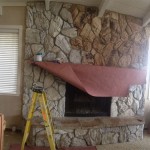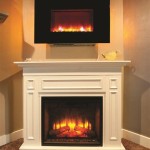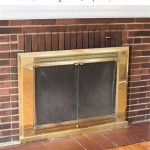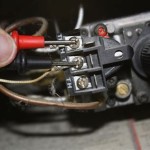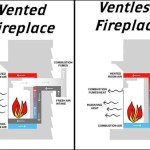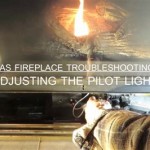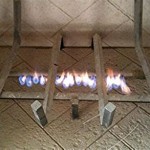Antique Coal Fireplace Insert: A Timeless Source of Warmth and Elegance
Antique coal fireplace inserts represent a significant piece of architectural history, offering a glimpse into a time when coal was the primary source of domestic heating. These inserts, designed to fit within existing fireplace openings, provided a more efficient and controllable method of burning coal compared to open fires. They are now highly sought after by collectors, interior designers, and homeowners seeking to restore historical properties or add a touch of vintage charm to contemporary spaces. Their enduring appeal lies in their functionality, aesthetic beauty, and the sense of connection they provide to a bygone era.
Understanding the intricacies of antique coal fireplace inserts requires knowledge of their construction, the various styles available, and the considerations involved in their restoration and use. This article aims to provide a comprehensive overview of these fascinating relics, exploring their history, design, and the factors that contribute to their value and desirability.
History and Evolution of Coal Fireplace Inserts
The use of coal for domestic heating dates back centuries, but the development of efficient and aesthetically pleasing fireplace inserts gained momentum during the 18th and 19th centuries. Open fireplaces, while providing some warmth, were notoriously inefficient, losing a significant amount of heat up the chimney. Coal fireplace inserts were designed to address this issue by creating a more contained and controlled burning environment. This improved heat radiation into the room, reduced smoke emissions, and allowed for better regulation of the fire's intensity.
Early coal fireplace inserts were often simple cast iron boxes with a grate for holding the coal and a door for loading and controlling the fire. As manufacturing techniques improved and design aesthetics evolved, inserts became more elaborate. Decorative ironwork, intricate castings, and the incorporation of materials like brass and tile became increasingly common. The Victorian era, in particular, saw a flourishing of ornate designs, reflecting the opulence and craftsmanship of the time.
The industrial revolution played a pivotal role in the mass production and widespread adoption of coal fireplace inserts. Foundries across Europe and North America produced a vast array of designs, catering to different tastes and budgets. The availability of standardized sizes and easy installation made these inserts a practical and desirable heating solution for homes of all sizes. The decline in the use of coal for heating in the mid-20th century led to a decrease in the production of new inserts, but the surviving examples have since become highly valued as antiques.
Key Design Features and Styles
Antique coal fireplace inserts exhibit a wide range of design features, reflecting the styles and preferences of different periods. One of the most prominent features is the use of cast iron, which provided durability and heat retention. The ironwork often includes intricate patterns, floral motifs, and classical figures, adding to the insert's visual appeal. Some inserts also incorporate tiles, typically ceramic or enamel, which were used to decorate the surround or firebox.
Several distinct styles of antique coal fireplace inserts can be identified. Georgian inserts, dating from the 18th century, tend to be more restrained in their design, emphasizing clean lines and symmetrical proportions. Victorian inserts, on the other hand, are characterized by their elaborate ornamentation, featuring detailed castings, ornate ironwork, and the use of contrasting materials. Art Nouveau inserts, popular in the late 19th and early 20th centuries, showcase flowing lines, organic motifs, and a focus on craftsmanship. Each style reflects the aesthetic sensibilities of its time and contributes to the unique character of the insert.
Beyond the overall style, specific design elements can also be noteworthy. The shape and size of the firebox, the design of the grate, the style of the door, and the presence of decorative features all contribute to the insert's aesthetic and functional qualities. Some inserts also include features such as dampers to control airflow, ash pans for easy cleanup, and adjustable vents to regulate heat output. These details reflect the ingenuity and craftsmanship of the manufacturers who designed and produced these enduring heating appliances.
Considerations for Restoration and Use
Restoring an antique coal fireplace insert requires a careful and methodical approach, taking into account the age and condition of the piece. The first step is to thoroughly clean the insert to remove any rust, dirt, or debris. This can be done using a wire brush, steel wool, or specialized cleaning solutions. It is important to avoid using abrasive cleaners that could damage the original finish.
Any damaged or missing parts should be repaired or replaced. Cast iron components can be repaired by welding or brazing, while broken tiles can be replaced with reproduction tiles or salvaged originals. Replacement parts can sometimes be found through antique dealers or online sources. It is important to ensure that any replacement parts are compatible with the original insert in terms of size, style, and material.
If the insert is intended for actual use, it is crucial to ensure that it is in safe working condition. This may involve inspecting the firebox for cracks or weaknesses, checking the operation of the damper and vents, and ensuring that the chimney is properly lined and maintained. It is also important to be aware of local regulations regarding the use of solid fuel appliances. While some choose to convert coal fireplace inserts to gas or electric, preserving the option to burn coal can maintain historical accuracy and provide a unique heating experience. Proper installation and regular maintenance are essential for safe and efficient operation. The aesthetic value and functional potential of antique coal fireplace inserts make them a worthwhile investment for those seeking to combine history and practicality in their homes.

Valor 530icn Coal Fire Radiant Gas Fireplace And Insert Installed With Polished Windsor Arch In Antiq Mantel Victorian

Belmont Small Gas Insert

Can You Burn Wood In A Coal Fireplace

21 Gas Coal Fireplaces Ideas Fireplace Inserts

Victor Gas Coal Burner Victorian Fireplace

Antique Cast Iron Fireplace Electric Gas Flamerite Fires

Belmont Small Gas Insert Old Fireplace

How Victorian Fireplaces Work Antique Fireplace Restoration

Antique Fireplaces Full Circle Architectural Antiques

Tradition Cast Iron Fireplace Insert 38 Victorian

